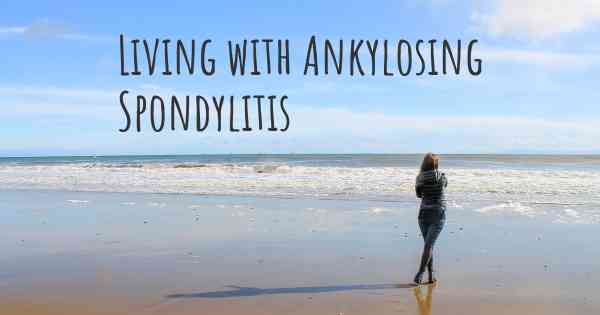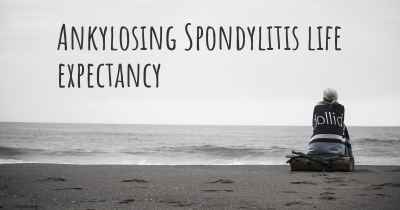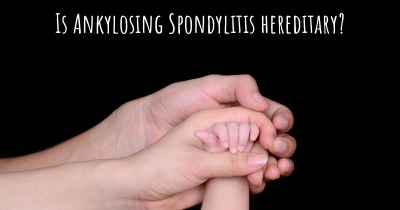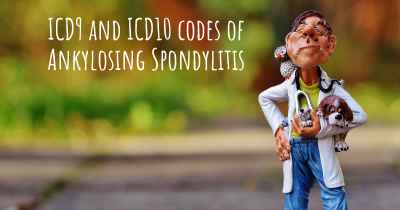Living with Ankylosing Spondylitis. How to live with Ankylosing Spondylitis?
Can you be happy living with Ankylosing Spondylitis? What do you have to do to be happy with Ankylosing Spondylitis? Living with Ankylosing Spondylitis can be difficult, but you have to fight to try to be happy. Have a look at things that other people have done to be happy with Ankylosing Spondylitis

Living with Ankylosing Spondylitis
Ankylosing Spondylitis (AS) is a chronic inflammatory disease that primarily affects the spine, causing pain, stiffness, and reduced mobility. While living with AS can be challenging, there are several strategies and lifestyle changes that can help manage the symptoms and improve your quality of life.
1. Seek Medical Care
It is crucial to consult with a healthcare professional who specializes in AS, such as a rheumatologist. They can provide an accurate diagnosis, prescribe appropriate medications, and guide you through treatment options. Regular check-ups and open communication with your doctor are essential for managing AS effectively.
2. Medication Management
Medications play a vital role in controlling AS symptoms and preventing disease progression. Nonsteroidal anti-inflammatory drugs (NSAIDs) are commonly prescribed to reduce pain and inflammation. In more severe cases, disease-modifying antirheumatic drugs (DMARDs) or biologic agents may be recommended. Adhering to your medication regimen as prescribed by your doctor is crucial for managing AS effectively.
3. Physical Activity
Regular exercise is crucial for managing AS. Engaging in low-impact activities such as swimming, walking, or cycling can help improve flexibility, reduce pain, and maintain joint mobility. It is important to consult with a physical therapist or an exercise specialist who can design a personalized exercise program that suits your abilities and limitations.
4. Posture and Spinal Care
Proper posture and spinal care are essential for individuals with AS. Maintaining good posture while sitting, standing, and walking can help alleviate pain and prevent further spinal deformities. Using ergonomic chairs, supportive pillows, and mattresses can also provide relief and improve sleep quality.
5. Heat and Cold Therapy
Applying heat or cold to affected areas can help reduce pain and stiffness. Warm showers, heating pads, or hot packs can relax muscles and joints, while cold packs or ice packs can numb the area and reduce inflammation. Experiment with both heat and cold therapy to find what works best for you.
6. Stress Management
Stress can worsen AS symptoms, so it is important to find effective stress management techniques. Engaging in activities such as yoga, meditation, deep breathing exercises, or pursuing hobbies can help reduce stress levels. Additionally, seeking support from friends, family, or joining support groups can provide emotional support and help cope with the challenges of living with AS.
7. Balanced Diet
A healthy, balanced diet is important for overall well-being and managing AS. While there is no specific diet for AS, consuming a variety of fruits, vegetables, whole grains, lean proteins, and healthy fats can support your immune system and reduce inflammation. Avoiding processed foods, sugary drinks, and excessive alcohol consumption is also recommended.
8. Adequate Rest
Getting enough rest and sleep is crucial for managing AS. Fatigue is a common symptom of AS, and proper rest can help alleviate this. Establish a regular sleep routine, create a comfortable sleep environment, and ensure you have a supportive mattress and pillows.
9. Work-Life Balance
Managing AS while maintaining a work-life balance can be challenging. It is important to communicate with your employer about your condition and discuss any necessary accommodations. Prioritizing self-care, setting realistic goals, and delegating tasks can help reduce stress and manage your energy levels effectively.
10. Stay Informed and Engaged
Stay informed about the latest research, treatment options, and self-care strategies for AS. Engage with patient advocacy groups, online forums, or support communities to connect with others who understand your experiences. Sharing knowledge and experiences can provide valuable support and help you stay proactive in managing your condition.
Living with Ankylosing Spondylitis requires a comprehensive approach that combines medical care, lifestyle modifications, and self-care strategies. By following these tips and working closely with your healthcare team, you can effectively manage your symptoms, improve your quality of life, and maintain your overall well-being.
Try to find a job that fits your body's limitations, or see if you can make adjustments at your current job. Prioritise, health being on the top of the list!
Make sure you get a good sleep.
Get to know your body, get to know yourself. It requires a lot of learning. And a lot of patience. Be consistent in anything you do (exercise, meditation, yoga, breathing exercises, sleep, time for work, time for family, and time to chill). It pays dividends.
Stress management is very, very important, as stress can trigger inflammations and consequently you find yourself in a lot of pain.
Make time for doing things you love to do. Hang out with your friends and family. Ask for help when you need one.
Stay positive and learn how to live with the disease as best as you possibly can :)
Posted Mar 4, 2017 by kat1 1050
Posted Mar 5, 2017 by Heather 1120
Posted May 17, 2017 by Shannon 1050
Posted May 17, 2017 by Keli 1050
Posted May 18, 2017 by Karlie 1150
Posted May 19, 2017 by Kylie Frost 2120
Posted May 19, 2017 by Tamra 1750
Posted Aug 31, 2017 by BigStu111 12832
Posted Sep 6, 2017 by Daniel Wilson 2010
Posted Sep 7, 2017 by Luciano Scariano 2600
Lastly, a equally accepting and supportive spouse made the change complete! In the end, yes, I have bad days and rest as needed but sieze the good days!
Posted Sep 10, 2017 by Sal 4050
Posted Sep 21, 2017 by Rana Navid Anwaar Khan 3945
Si è felici anche se si hanno forti limitazioni funZionali
Si frequentano anche gruppi di sostegno psicologico
Posted Oct 1, 2017 by Silvia 2500
Posted Feb 16, 2018 by Laeti 3570
Posted May 31, 2018 by Colleen 2550
Posted Aug 10, 2017 by Andressa 1050
Posted Aug 14, 2017 by Luz 901
Posted Aug 15, 2017 by Adriana 1000








